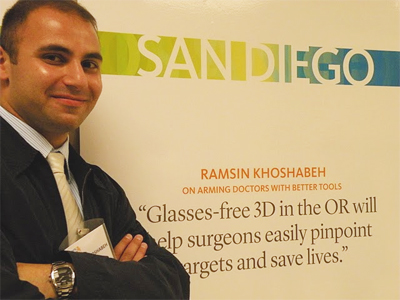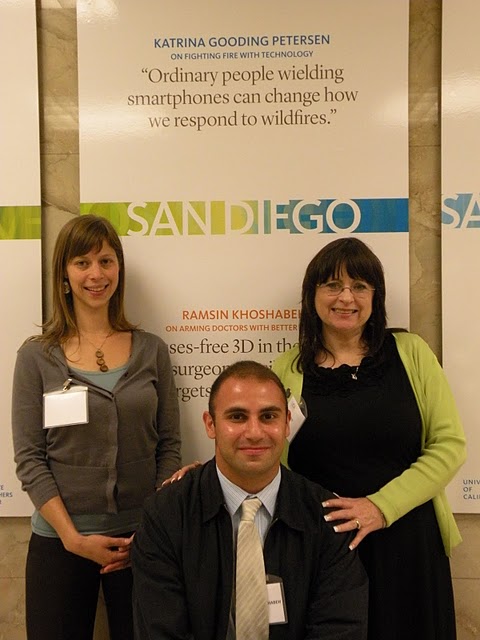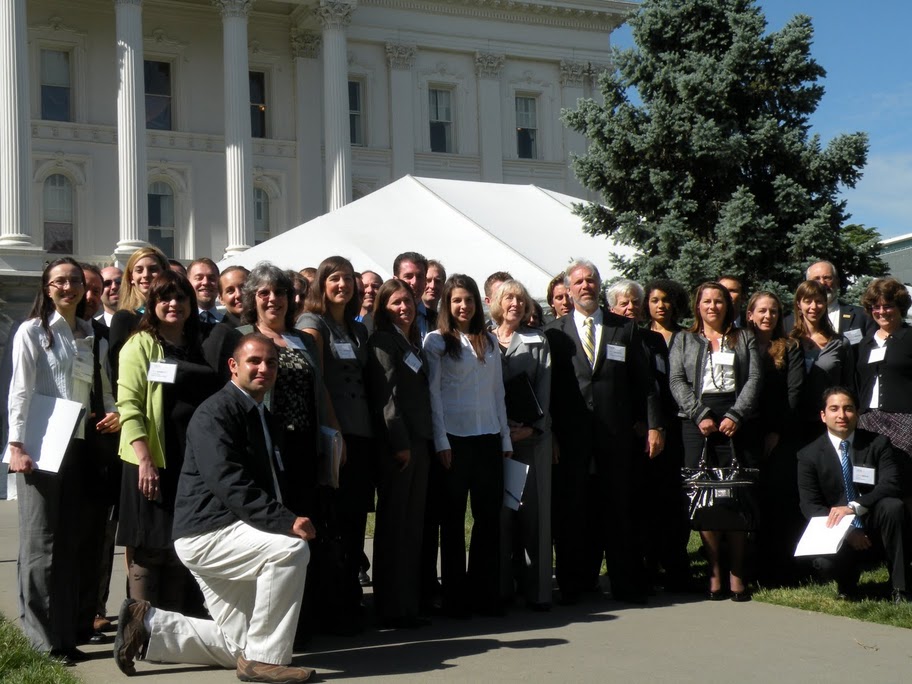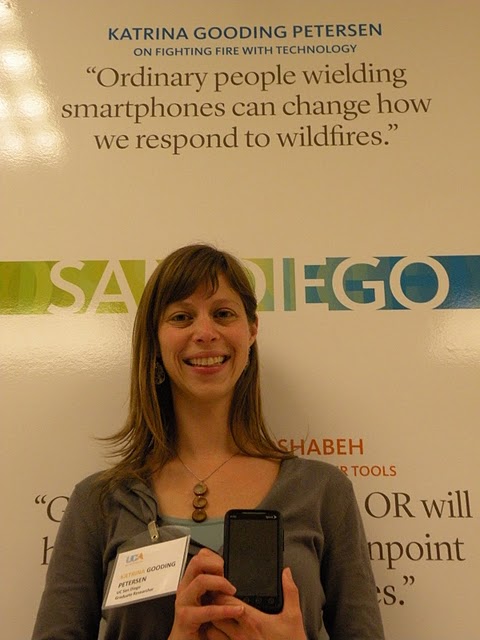Advocating for Graduate Student Research in Sacramento
San Diego and Sacramento, May 16, 2011 -- Graduate students are at the heart of research taking place on the University of California’s ten campuses, and many package their expertise, creativity and compassion to tackle and solve key problems in California and beyond.
|
Case in point: Ramsin Khoshabeh, a Ph.D. student from UC San Diego, who is developing a 3D tool to help surgeons see more clearly inside the human body when doing laparoscopic procedures. Khoshabeh is one of 20 graduate students from across the UC system who represented the University of California at an event on May 11 in Sacramento.
The graduate students and deans of graduate divisions – including UCSD dean of graduate studies Kim Barrett – met with California legislators to discuss the importance of graduate research and education. The Graduate Research Advocacy Day was especially timely as lawmakers are grappling with key decisions to address budget shortfalls at the state level that are expected to translate into substantial spending cuts throughout the UC system.
"It's critical that state legislators understand that graduate education is so much more than simply taking more advanced courses," said Barrett. "On the contrary, our graduate students are generating new knowledge that will benefit humanity, create new companies and jobs, and help to solve the state's most pressing problems. In our meetings with lawmakers and staffers from both sides of the aisle, we found receptive audiences for this information."
UC San Diego's Khoshabeh told lawmakers and legislative staffers that at one point he almost gave up on earning a Ph.D. in Electrical Engineering because he feared the field might not complement his goal of wanting to help people.
|
While on his way to Peru, where he planned to "do some soul-searching," Khoshabeh emailed his concerns to Stacey Liekweg, then executive director of the Institute for Engineering in Medicine (IEM) at UC San Diego. Liekweg responded, suggesting he was a good candidate for the graduate program.
Upon his return from Peru, he immediately contacted her. Through the interdisciplinary nature of IEM, Khoshabeh was fortunate enough to observe world-class surgeons perform operations using robotics with a 3D console. But he noticed that laparoscopic surgery, using tiny incisions and even tinier cameras, forces surgeons to operate without depth perception. "It's like doing surgery with one eye closed," he explained.
The 28-year-old Khoshabeh believed that laparoscopic surgeons could operate in 3D using video feeds from two cameras, combined with computer estimates of depth.
Khoshabeh successfully entered the program and is now developing the 3D tool in the Video Processing Laboratory at the UCSD division of the California Institute for Telecommunications and Information Technology (Calit2). "Singlehandedly, she (Liekweg) altered the course of my life," he says.
Khoshabeh is currently working with UCSD Jacobs School of Engineering Electrical and Computer Engineering Professor Truong Nguyen and Dr. Mark Talamini, a Professor of Surgery in the UC San Diego School of Medicine.. Their “3D-Enabled Surgical System” project, including the one-year fellowship for Khoshabeh, was one of 19 projects selected for funding under the Calit2 Strategic Research Opportunities (CSRO) program in 2010-’11.
|
“While most advances have led to enhanced capabilities for surgeons and staff, they have also increased the degrees of physical separation between the physician and patient,” Khoshabeh told the audience last December during the CSRO Symposium to make Calit2’s 10th anniversary. With the advent of new technology that permits viewing in 3D without glasses – so-called autostereoscopic displays – they hope to transform the laparoscopic surgical experience. Added Khoshabeh: “We leverage the use of autostereoscopic displays to synthesize 3D images that can be seen with the naked eye. In doing so, we enable everyone in the operating room to see the 3D video feed from stereo surgical cameras without the need for any special glasses.” (Click here to watch Ramsin Khoshabeh’s Dec. 7 presentation.)
“Our long-term goal is to develop algorithms to enable 3D for even single-camera surgical systems, such as conventional laparoscopes,” said Khoshabeh.
|
"Try going to New Orleans with the name Katrina," joked Katrina Petersen, who visited the city just after the devastating 2005 hurricane.
She spent a week with a grassroots group called the Louisiana Bucket Brigade, studying how smart phones, GPS devices and other technology devices were used to collect and share information in the midst of a crisis. She left New Orleans armed with a conceptual framework that would lead to her dissertation on crisis-mapping during the California wildfires of 2007.
But her emphasis is not just on technology. She also focuses on how all the information — coming anywhere from satellites to people with handheld radios — is used to provide the best maps and resources for dealing with disasters. Petersen, like many other UC scholars, seamlessly merges high technology with a powerful sense of humanity.
Historically, UC graduate students have played a key role in UC's research success. Many start or join new companies that are sparked by their research innovations. And those companies develop new technologies and create jobs. "The legislators don't often hear very much about the research done by students and how important it is,” said Patricia Calarco, dean of the Graduate Division at UCSF, “and about how central it is to the California economy."
Related Links
CSRO
UC Article
3D Surgical System Presentation to CSRO Symposium
Katrina Petersen
Media Contacts
Doug Ramsey, 858-822-5825, dramsey@ucsd.edu





